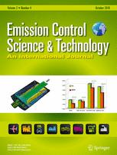
Emission Control Science and Technology
metrics 2024
Driving Progress in Automotive and Environmental Health
Introduction
Emission Control Science and Technology is a cutting-edge journal published by SpringerNature, aimed at disseminating innovative research and advancements in the field of emission control technology. With an ISSN of 2199-3629 and an E-ISSN of 2199-3637, this journal serves as a crucial platform for sharing knowledge among researchers, professionals, and students engaged in automotive engineering, environmental science, and public health. Since its inception in 2015, the journal has grown in stature, reflected in its impressive Q2 ranking in Automotive Engineering and Q3 rankings in Health, Toxicology and Mutagenesis, Management, Monitoring, Policy and Law, and Pollution for 2023. With a commitment to open access, it stands as a vital resource for those looking to make impactful contributions to the field, addressing critical issues such as environmental sustainability and public health. Through rigorous peer-review processes, Emission Control Science and Technology ensures that only the most relevant and high-quality research is published, making it an essential read for anyone invested in the future of emission control and environmental health.
Metrics 2024
 0.33
0.33 1.30
1.30 -
- 22
22Metrics History
Rank 2024
Scopus
IF (Web Of Science)
JCI (Web Of Science)
Quartile History
Similar Journals

SAE International Journal of Electrified Vehicles
Transforming Transportation Through Electrification InsightsSAE International Journal of Electrified Vehicles, published by SAE International, is a pioneering journal dedicated to the field of electrified transportation. Operating since 2020, this journal offers a crucial platform for researchers, engineers, and practitioners who are at the forefront of advancements in vehicle electrification and related technologies. With an ISSN of 2691-3747 and an E-ISSN of 2691-3755, it is indexed within respected databases, showcasing its commitment to high-quality research in Automotive Engineering and Fuel Technology. As part of the Q3 category in the 2023 rankings for both automotive and energy sectors, the journal facilitates the exchange of innovative ideas and groundbreaking studies that contribute to the evolution of the electrified vehicle industry. While currently not open access, the journal offers various subscription options for readers, making valuable insights accessible to a broad audience. Conducting research in this dynamic field, the SAE International Journal of Electrified Vehicles is vital for professionals striving to push the boundaries of technology and sustainability in modern transportation.

Solid Fuel Chemistry
Innovating Chemistry for Sustainable EnergySolid Fuel Chemistry is a pivotal journal published by PLEIADES PUBLISHING INC, dedicated to advancing knowledge in the fields of chemical engineering, chemistry, and fuel technology. With its ISSN 0361-5219 and E-ISSN 1934-8029, this esteemed publication has been contributing to the scientific community since its inception, covering extensive research from 1975 to 2024. Operating within the Q3 and Q4 quartiles, it holds a significant position among peers in its categories, ranked 94th in Energy & Fuel Technology and 212th in General Chemical Engineering. Although it lacks an open access option, the journal remains a vital resource for researchers, professionals, and students eager to explore innovative developments in solid fuels and their applications. The articles published in Solid Fuel Chemistry provide essential insights, facilitate collaboration, and inspire further research, making it an indispensable platform for anyone engaged in this essential field of study.
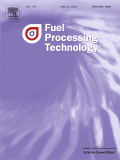
FUEL PROCESSING TECHNOLOGY
Exploring the forefront of energy and environmental sustainability.FUEL PROCESSING TECHNOLOGY, published by Elsevier, is a highly regarded scholarly journal dedicated to advancing the field of fuel processing and technology. With an impressive Q1 ranking in major categories such as Chemical Engineering, Energy Engineering, and Fuel Technology, this journal serves as a vital resource for researchers, professionals, and students alike, offering cutting-edge research and comprehensive reviews since its inception in 1977. Boasting a Scopus ranking that places it within the top 10% of its field, FUEL PROCESSING TECHNOLOGY is committed to disseminating innovative findings and methodologies that are crucial for the development of sustainable fuel technologies. In line with its commitment to accessibility, the journal will transition to Open Access status starting in 2024, thereby broadening the reach and impact of valuable research. Located in Amsterdam, Netherlands, the journal is strategically positioned to foster global collaboration and dialogue, making it an essential platform for scholars dedicated to the critical challenges in energy and environmental sustainability.

Applications in Energy and Combustion Science
Igniting Innovation in Energy and Combustion ResearchWelcome to Applications in Energy and Combustion Science, a premier open-access journal published by ELSEVIER that has been at the forefront of research since 2020. With the ISSN 2666-352X, this journal is dedicated to advancing the knowledge and application of energy technologies and combustion systems, reflecting a strong commitment to the evolving demands of the field. Based in the United Kingdom and recognized for its robust contributions, it has achieved noteworthy status in the 2023 rankings: a Q1 classification in both Chemical Engineering (miscellaneous) and Fuel Technology, alongside a Q2 standing in Energy (miscellaneous). Researchers will find it a significant platform, with Scopus rankings placing it among the top tiers in various categories. This journal offers an essential resource for professionals and students aiming to stay abreast of innovative developments and applications in the critical areas of energy and combustion, ensuring broad accessibility and dissemination of research findings.
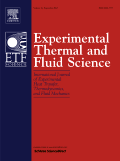
EXPERIMENTAL THERMAL AND FLUID SCIENCE
Innovating the future of engineering through experimental research.EXPERIMENTAL THERMAL AND FLUID SCIENCE is a prestigious academic journal published by Elsevier Science Inc, dedicated to advancing the fields of thermal and fluid sciences. With a strong focus on innovative experimental research, it plays a crucial role in disseminating new knowledge and techniques across multiple domains, including Aerospace Engineering, Chemical Engineering, Fluid Flow and Transfer Processes, Mechanical Engineering, and Nuclear Engineering. Holding a notable impact factor and ranking in the Q1 quartile across these categories since 2023, the journal is recognized for its high-quality contributions, which appeal to a diverse audience of researchers, industry professionals, and students alike. Additionally, with dedicated coverage from its inception in 1988 to projections extending through 2025, EXPERIMENTAL THERMAL AND FLUID SCIENCE provides a vital platform for sharing advancements in experimental techniques and findings that shape the future of engineering and applied sciences.

International Journal of Heavy Vehicle Systems
Driving Innovation in Heavy Vehicle SystemsThe International Journal of Heavy Vehicle Systems, published by INDERSCIENCE ENTERPRISES LTD in the United Kingdom, is a pivotal resource for professionals and researchers in the fields of automotive and mechanical engineering. With an ISSN of 1744-232X and an E-ISSN of 1741-5152, this journal serves as an academic platform dedicated to exploring the latest innovations and technologies pertaining to heavy vehicle systems, including design, performance, and environmental impact. Boasting a Category Quartile of Q3 in both Automotive and Mechanical Engineering as of 2023, it ranks among the growing body of literature in these disciplines, indicative of its commitment to quality research. The journal is widely accessible through diverse open access options, encouraging the dissemination of knowledge within the academic community. By publishing cutting-edge studies and reviews, the International Journal of Heavy Vehicle Systems plays an essential role in advancing our understanding of heavy vehicle technologies, providing invaluable insight for engineers, researchers, and students eager to contribute to this dynamic field.

Additive Manufacturing Letters
Connecting Researchers to the Frontiers of Manufacturing InnovationAdditive Manufacturing Letters is a pioneering journal dedicated to the rapidly evolving field of additive manufacturing, offering an innovative platform for researchers, practitioners, and students interested in the latest advancements and technologies in this domain. Published by ELSEVIER in the Netherlands, this Open Access journal has been making significant strides since its inception in 2021, allowing for unrestricted access to its valuable content. As of 2023, it has achieved a commendable Q1 ranking in multiple categories including Engineering (miscellaneous), Industrial and Manufacturing Engineering, Materials Science (miscellaneous), and Mechanics of Materials, indicating its influential presence in the academic community. With a focus on high-quality research, Additive Manufacturing Letters fosters dialogue and collaboration among scholars, promoting cutting-edge research that aligns with the needs of the industry. Positioned at the intersection of engineering and materials science, this journal aims to enhance knowledge dissemination and support innovation in additive manufacturing methodologies and applications, making it an essential resource for anyone invested in advancing this field.
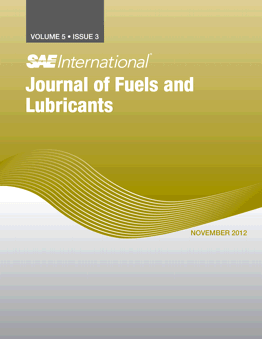
SAE International Journal of Fuels and Lubricants
Pioneering Research for a Greener TomorrowWelcome to the SAE International Journal of Fuels and Lubricants, a leading peer-reviewed publication dedicated to advancing knowledge in the crucial fields of fuel technology and lubrication science. Published by SAE International, this journal serves as a vital resource for researchers, industry professionals, and students engaged in the study and application of innovative fuels and lubricants. With an impact factor indicative of its importance, the journal is ranked in the Q3 category for both Fuel Technology and Pollution, highlighting its critical role in addressing global energy and environmental challenges. Covering a range of topics from fundamental research to practical applications, the journal not only contributes to academic discourse but also serves to inform industry practices. Our publication spans the converged years from 2009 to 2024, reflecting a commitment to continuous scholarly contribution. While currently operating under a traditional access model, the journal aims to foster an inclusive environment for discourse in the rapidly evolving fields of energy and environmental science.
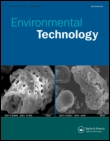
ENVIRONMENTAL TECHNOLOGY
Innovating Environmental Solutions Through Cutting-Edge ResearchENVIRONMENTAL TECHNOLOGY, published by Taylor & Francis Ltd, is a prominent journal that serves as a crucial platform for disseminating pioneering research in the multifaceted fields of Environmental Science, Water Science and Technology, and Waste Management. With an impressive record spanning over three decades from 1990 to 2024, the journal holds significant rankings in various categories, including Q3 in Environmental Chemistry and Q2 in both Medicine (miscellaneous) and Water Science and Technology for 2023. Its Scopus rankings further position it within the top tiers of Environmental Science disciplines, reflecting its influence and relevance, particularly as it pertains to pressing global environmental challenges. While the journal does not offer an open access option, it remains dedicated to advancing knowledge and promoting innovative solutions among researchers, professionals, and students engaged in environmental studies. As it continues to attract high-quality submissions, ENVIRONMENTAL TECHNOLOGY plays a vital role in shaping future research and practices aimed at sustainable environmental management.

Journal of Thermal Science and Technology
Unveiling high-impact research in the heart of thermal engineering.Journal of Thermal Science and Technology, published by the Japan Society of Mechanical Engineers, is a distinguished open-access journal that has been serving the academic community since its inception in 2009. With a commitment to disseminating cutting-edge research in the realms of thermal science and its engineering applications, the journal has established itself as an essential resource for researchers, professionals, and students alike. Holding important quartile rankings in 2023, including Q3 in Atomic and Molecular Physics, Engineering (miscellaneous), and Materials Science (miscellaneous), this journal showcases high-impact studies that contribute to the advancement of technology and materials engineering. Open access since 2021, it aims to enhance the visibility and accessibility of critical research findings, thus fostering innovation and collaboration within the global scientific community. The journal’s dedicated editorial board actively seeks to publish novel insights that not only engage with existing challenges but also inspire future developments in thermal science and technology.